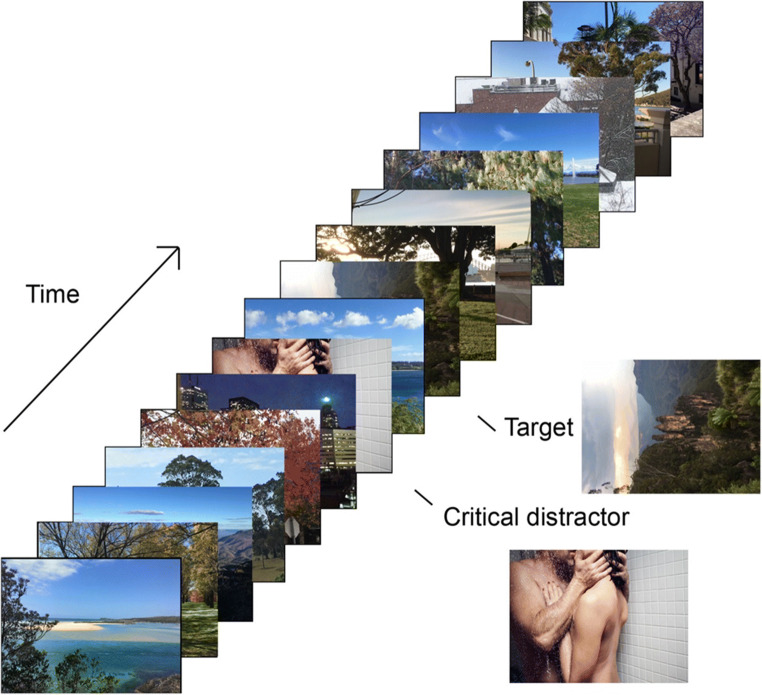Fig. 1.
An illustrative example of an emotion-induced blindness experimental trial. Note. Each image is presented briefly (e.g., 100 ms). Participants’ task is to identify whether the target is oriented to the left or the right, and their accuracy is measured. The key manipulation is that the critical distractor is either emotionally salient (negative or positive) or emotionally neutral, and the time (lag) between the distractor and target is varied. This example uses an image similar to those typically used as a positive critical distractor, although those used in research often depict more explicit nudity and sexual acts. The critical distractor image was obtained from unsplash.com; all other images were photographs taken by the first author.

